Thecus N2560: Intel's EvanSport NAS Platform Review
by Ganesh T S on November 25, 2013 3:30 PM ESTCIFS Performance Evaluation
Evaluating the N2560 was fairly straightforward. We only needed to check up on CIFS performance (as both NFS and iSCSI are not supported). The unit was configured with two WD4000FYYZ (WD RE) 4 TB drives in RAID-1 configuration. From the outside, it looks like it would be ideal to compare the performance of this unit with that of the ReadyNAS 312 we reviewed a couple of weeks back. Unfortunately, the presence of two GbE ports on the RN312, as well as business targeted feature set puts it in a different class. As such, we can compare with other ARM-based 2-bay units. The Synology DS213 is one such unit that we have evaluated before in the form of the ioSafe N2.
Single Client (Windows) Mode:
The single client CIFS performance of the Thecus N2560 was evaluated on the Windows platforms using Intel NASPT and our standard robocopy benchmark. This was run from one of the virtual machines in our NAS testbed. All data for the robocopy benchmark on the client side was put in a RAM disk (created using OSFMount) to ensure that the client's storage system shortcomings wouldn't affect the benchmark results
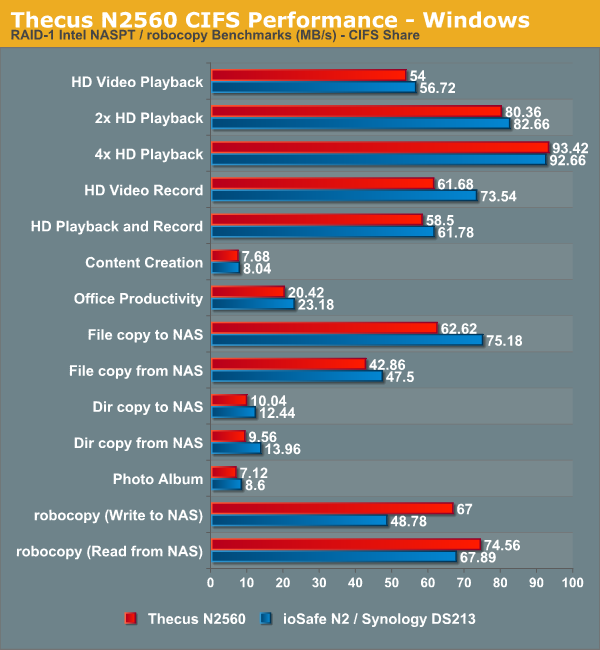
We find that the ARM-based ioSafe N2 / Synology DS213 performs better than the Thecus N2560 in a majority of the tests. However, the robocopy benchmarks (more representative of home users copying lots of files to and from the NAS) land in favour of the Thecus N2560. I would say that, based on performance alone, the Thecus N2560 will run neck-and-neck with the modern ARM-baed 2-bay units such as the Synology DS213.
Multi-Client (Windows) Mode:
We put the Thecus N2560 through some IOMeter tests with a CIFS share being accessed from up to 25 VMs simultaneously. The following four graphs show the total available bandwidth and the average response time while being subject to different types of workloads through IOMeter. IOMeter also reports various other metrics of interest such as maximum response time, read and write IOPS, separate read and write bandwidth figures etc.. Readers interested in the actual values can refer to our evaluation metrics table available here.
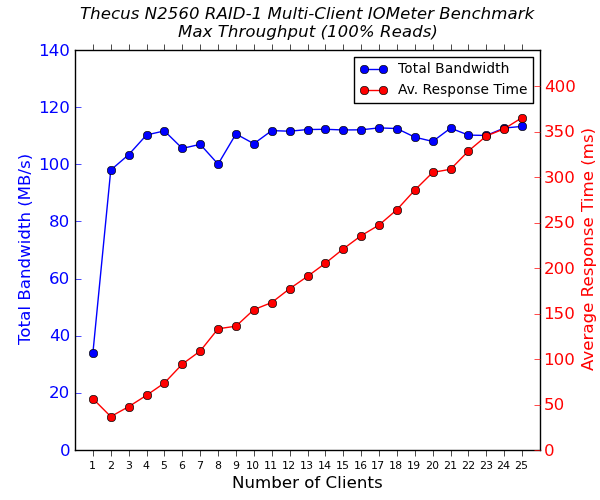
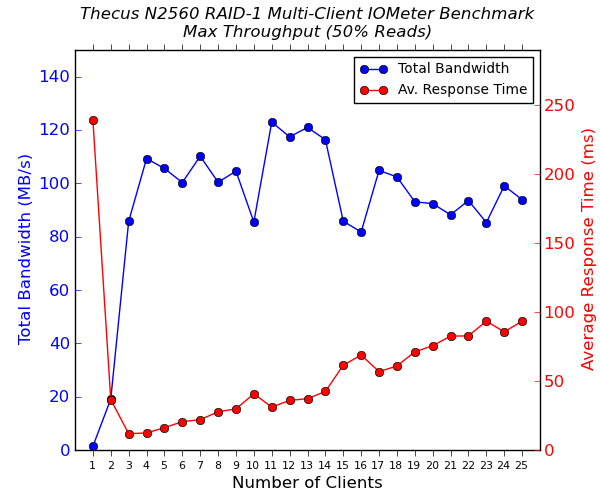
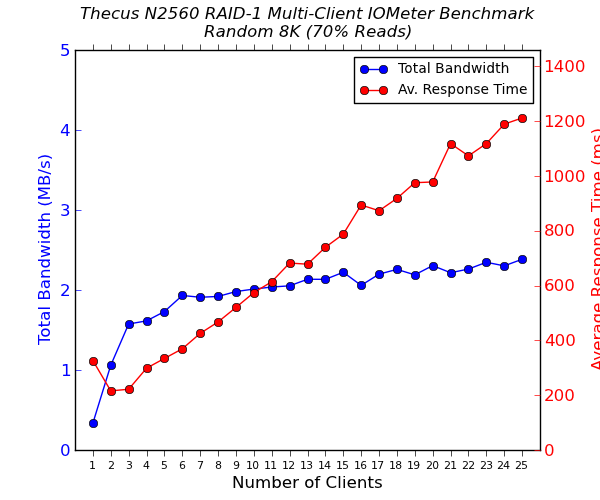
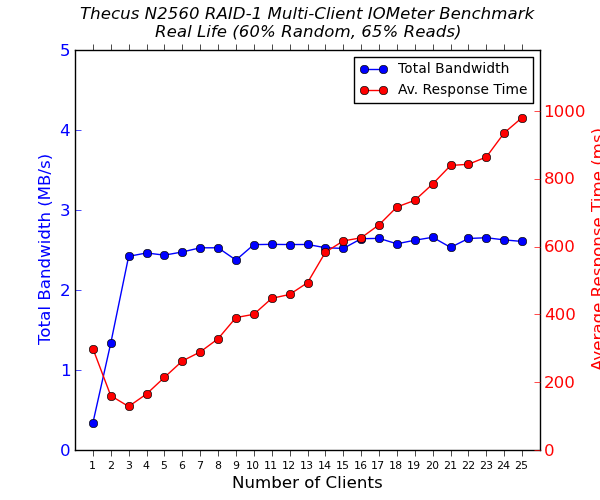
Comparing these graphs with what we obtained for the ioSafe N2 / Synology DS213, it can be inferred that the Thecus N2560 manages to maintain performance even as the number of clients connected to it keeps increasing. For the Synology DS213, we saw a dip in performance after more than 10 clients started connecting to it. The Thecus N2560 also manages to get consistently better average response times in various tests (for the same number of clients). However, it is not clear whether the average home consumer will have more than 10 clients simultaneously accessing data on the NAS. In that case, the choice may come down to non-performance aspects.










73 Comments
View All Comments
JoannWDean - Saturday, December 14, 2013 - link
my buddy's aunt earned 14958 dollar past week. she been working on the laptop and got a 510900 dollar home. All she did was get blessed and put into action the information leaked on this site... http://cpl.pw/OKeIJoJEmlay - Monday, May 19, 2014 - link
No, I do not need more than 2 slots. 2 Drives, RAID0 with an external NTFS backup.xdrol - Monday, November 25, 2013 - link
Someone please enlighten me. Why does a NAS platform need a H.264 _encoder_?OzzieGT - Monday, November 25, 2013 - link
Transcode content into H.264 for devices which might not be able to read the native format.jwcalla - Tuesday, November 26, 2013 - link
Are there really devices out there that can't do H.264 Full HD?ganeshts - Tuesday, November 26, 2013 - link
Bandwidth constraints? You probably don't want a 1080p video streamed to your smartphone (which probably may not support the original H.264 profile) in full bit-rate. Transcoding to a smaller bitrate is often the reason why people use media servers.jwcalla - Tuesday, November 26, 2013 - link
Aren't we talking about like 10 Mb/s? What modern wifi couldn't handle that?ganeshts - Tuesday, November 26, 2013 - link
Blu-ray uncompressed MKVs can go up to 54 Mbps for non-3D titles. Couple this with multiple streams being played via different mobile devices simultaneously -- it still makes sense to transcode to a lower bitrate in situations (read, small screens) where the quality difference is not noticeable.jwcalla - Tuesday, November 26, 2013 - link
People are storing uncompressed Blu-ray on their two-bay NAS?ganeshts - Tuesday, November 26, 2013 - link
Why not? 4 TB + 4 TB in RAID-1 will get you a pretty big library, considering that the average Blu-ray size without the extras and stuff will probably be inbetween 20 - 30 GB.